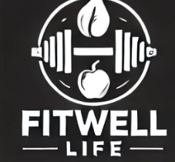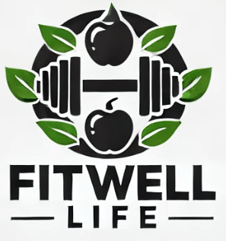Revitalize Your Health: A Comprehensive Guide for Men Aged 35-55
1/3/20258 min read


Understanding the Importance of Fitness After 35
As men transition into their mid-thirties, a significant shift often occurs in their physical health and fitness needs. This stage of life is characterized by various biological changes, including a decrease in metabolism and muscle mass. The aging process can lead to higher fat accumulation, which poses risks for numerous health complications, including cardiovascular diseases and diabetes. Consequently, it becomes vital for men aged 35 to 55 to adapt their fitness regimes to counteract these changes effectively.
Moreover, maintaining an active lifestyle can significantly improve overall well-being. Engaging in regular physical activity not only helps combat the adverse effects of aging but also plays a crucial role in enhancing mood and mental health. Studies show that men who prioritize fitness are less likely to experience anxiety or depression. Exercise stimulates the release of endorphins, which can elevate mood and contribute to a more positive outlook on life.
The correlation between physical fitness and longevity is another critical aspect to consider. Research indicates that men who engage in regular exercise tend to live longer than their sedentary counterparts. Consistent physical activity strengthens the heart, boosts circulation, and helps maintain a healthy weight, all of which are essential for a longer lifespan. Additionally, workout routines that focus on strength training can further mitigate the natural decline in muscle mass, which typically begins around age 30.
Ultimately, prioritizing fitness after age 35 is not merely a recommendation but a vital necessity for maintaining a healthier, more fulfilling life. By understanding these changes and implementing appropriate fitness strategies, men can enhance their quality of life, promote longevity, and reduce the risk of chronic diseases.
Cultivating a Balanced Diet: Nutrition Tips for Optimal Health
Men aged 35-55 experience unique health challenges that can be effectively managed by adopting a balanced diet rich in essential nutrients. A nutritious diet plays a crucial role in maintaining overall health, increasing energy levels, and preventing chronic diseases. Prioritizing whole foods should be at the forefront of dietary choices. These foods, which include fruits, vegetables, whole grains, lean proteins, and healthy fats, provide vital nutrients that support the body's various functions.
Incorporating healthy fats, such as those found in avocados, nuts, and olive oil, into the diet is essential for cardiovascular health. These fats can help reduce inflammation and improve cholesterol levels, which tend to be a concern for men in this age range. Lean proteins should also be emphasized, as they play a significant role in muscle maintenance and repair. Sources such as fish, poultry, beans, and legumes offer beneficial nutritional properties while being lower in saturated fats compared to red meats.
Meal planning is an effective strategy that allows men to make thoughtful choices about their diets. Setting aside time each week to prepare meals helps in controlling portion sizes and ensures that a variety of nutrients are included. Aiming for half of one’s plate to consist of fruits and vegetables can significantly enhance overall nutrient intake. Furthermore, practicing mindful eating by paying attention to hunger cues and enjoying meals without distractions can lead to healthier eating habits and prevent overeating.
To facilitate optimal health, men in this age group should focus on building a dietary routine that incorporates nutrient-dense foods while minimizing processed food consumption. Regularly monitoring one’s diet can greatly enhance health outcomes, ensuring a sustainable and balanced approach to eating. By following these nutrition tips and making conscious choices, men can effectively revitalize their health and well-being.
Creating a Personalized Fitness Routine: Finding What Works for You
Developing a personalized fitness routine is essential for men aged 35-55, as it caters to individual needs, preferences, and lifestyles. To begin crafting a suitable plan, it is crucial to assess personal fitness levels and identify specific goals. These objectives could range from weight loss and muscle gain to improved endurance or overall health enhancement. Understanding what motivates you is key to establishing a regime that remains engaging and productive.
Incorporating a variety of exercise forms is vital for a comprehensive fitness routine. Strength training should be a fundamental component, as it not only promotes muscle growth but also aids in maintaining a healthy metabolism. Men in this age group often experience muscle mass decline, making strength workouts necessary to counteract this effect. Aim for at least two to three sessions of resistance training per week, focusing on major muscle groups.
Cardiovascular exercises, such as running, swimming, or cycling, play an equally vital role in enhancing cardiovascular health and increasing stamina. These activities should comprise at least 150 minutes of moderate-intensity aerobic exercise each week. Balancing strength and cardiovascular workouts will provide substantial health benefits, leading to improved overall fitness and well-being.
Additionally, flexibility and balance workouts should not be overlooked. Incorporating yoga or pilates can improve flexibility, reduce injury risks, and enhance overall coordination. As one ages, maintaining balance becomes increasingly significant to prevent falls and related injuries.
To ensure your fitness routine is effective, setting realistic goals and progress tracking is imperative. Utilize performance metrics and personal milestones to assess your advancement regularly. This practice not only keeps you motivated but also allows for necessary adjustments to your routine, ensuring it remains appropriate and enjoyable.
The Mental Health Connection: Fitness as a Mood Booster
Exercise is widely recognized for its benefits in physical health; however, its effects on mental health are equally profound. Engaging in regular physical activity can significantly reduce symptoms associated with stress, anxiety, and depression. The biochemical response to exercise releases endorphins, often referred to as ‘feel-good hormones,’ which can elevate mood and contribute to an overall sense of well-being. For men aged 35 to 55, integrating fitness into their daily routine is not just a method for physical upkeep but a vital strategy for mental wellness.
One of the key ways that exercise benefits mental health is through its ability to reduce levels of cortisol, the body’s primary stress hormone. When cortisol levels are managed effectively, individuals often experience a decrease in anxiety and an improvement in mood. Moreover, engaging in aerobic exercises, such as running, cycling, or swimming, has been linked to lowering depressive symptoms while enhancing cognitive functions, such as memory and concentration. This enhancement is particularly important for men navigating the complexities of both professional and personal life challenges.
Additionally, incorporating mindfulness practices such as yoga into one’s fitness regimen can further enhance mental health. Yoga promotes relaxation and mindfulness, which can alleviate anxiety and stress through its focus on controlled breath and meditation. Outdoor activities, such as hiking or walking in nature, not only provide the benefits of physical exertion but also connect individuals with their environment, fostering a sense of peace and tranquility.
Furthermore, the social aspects of fitness—whether participating in group sports, fitness classes, or simply exercising with friends—can lead to increased self-esteem and a sense of belonging. These connections are essential for mental health, as strong relationships contribute to resilience against mental health issues. Therefore, incorporating varied forms of exercise as part of a holistic approach to health can provide substantial mental health benefits while contributing to an improved quality of life.
Overcoming Barriers to Fitness: Strategies for Success
For men aged 35-55, navigating the journey towards fitness can be complex, often marred by various barriers. Addressing these challenges is essential to fostering a sustainable fitness routine. Common obstacles include time constraints, lack of motivation, and designated prior injuries that may impede physical activity. Understanding these issues is the first step in overcoming them.
Time is arguably one of the largest barriers to fitness for men in this age bracket. Professional commitments, family responsibilities, and social obligations can leave little room for exercise. Rather than viewing physical activity as a separate task, it can be beneficial to integrate fitness into daily routines. Simple strategies such as taking the stairs instead of the elevator, going for a brisk walk during lunch breaks, or engaging in family activities that promote movement can be effective. Scheduling workout sessions as appointments, just like any other important task, can help prioritize fitness in daily life.
Motivation can fluctuate, especially when results are not immediately visible. Setting realistic, achievable goals allows for measurable progress and can reinvigorate one’s commitment. Joining group classes or fitness communities can provide social support, which could help sustain motivation. Encouragement from peers fosters accountability, creating an environment where fitness goals are pursued collectively.
For those dealing with prior injuries, it is vital to approach fitness with caution. Consulting with healthcare professionals or a certified personal trainer specializing in rehabilitation can provide tailored exercise plans that account for any physical limitations. Adaptive exercises or low-impact activities, such as swimming or cycling, can also deliver great benefits while minimizing the risk of re-injury.
Overall, success in fitness requires recognizing and addressing personal barriers. By implementing practical strategies and seeking support from others, men aged 35-55 can enhance their physical health and overall wellness.
Incorporating Active Lifestyle Habits into Daily Routine
In today's fast-paced world, maintaining an active lifestyle is essential for men aged 35-55. However, it is not necessary to confine physical activity to structured exercise sessions. There are several practical and straightforward ways to weave active habits into daily life that can significantly contribute to overall health and well-being.
One simple yet effective method is to increase daily incidental activity. Men can start by incorporating short walks into their routine, whether it be walking their dog or taking a brief stroll during lunch breaks. This approach promotes cardiovascular health while breaking up sedentary periods, thus keeping energy levels elevated throughout the day. Instead of opting for elevators, taking the stairs whenever possible is another beneficial strategy. This not only enhances physical fitness but also increases muscle strength and endurance.
Another suggestion is to incorporate cycling into everyday activities. Riding a bicycle to work or for errands can be a refreshing alternative to driving, reducing stress while promoting cardiovascular fitness. Further, capturing moments for family activities, such as outdoor games or hiking, enables men to bond with loved ones while staying active.
Pursuing active hobbies is also a rewarding way to enhance overall health. Engaging in activities like gardening, dancing, or even participating in community sports leagues can make exercise enjoyable and socially engaging. Being part of a community group or club tailored to physical activity encourages consistency and accountability, as participants support one another in maintaining their fitness objectives.
Incorporating these active habits not only fosters a healthier lifestyle but also contributes to improved mental well-being. Prioritizing movement throughout the day creates a foundation for sustained energy and vitality, ultimately enhancing the quality of life during these vital years.
Measuring Success: Setting and Adjusting Your Health Goals
Understanding how to measure success in your health journey is crucial for maintaining motivation and ensuring continuous improvement. For men aged 35-55, various metrics can be employed to assess fitness progress effectively. Physical performance can be evaluated through strength, endurance, flexibility, and overall activity levels. Regularly assessing these metrics allows individuals to identify areas of improvement and define tangible goals that are directly connected to their overall fitness objectives.
Energy levels serve as another essential indicator of health. Keeping track of daily energy fluctuations can provide insights into dietary choices, exercise routines, and overall wellness. A decline in energy may signal a need for adjustments in your regimen, such as improving nutrition or incorporating more rest days. Additionally, monitoring health indicators, like blood pressure, cholesterol levels, and body mass index (BMI), enables a more comprehensive understanding of your physical condition.
As you make progress, it is vital to adjust health goals based on your achievements and any changes in lifestyle. Setting SMART (Specific, Measurable, Achievable, Relevant, Time-bound) goals can aid in this process. For instance, if you've successfully increased your weekly running distance, you might set a new goal focused on speed. Evaluating and adapting your goals will help maintain challenge and interest, which is essential for long-term success.
Celebrating milestones, whether big or small, is equally important in sustaining motivation. Acknowledging achievements not only reinforces your commitment but serves as a reminder of the progress made. Whether you treat yourself to a relaxing spa day or share your accomplishments with friends, these gestures provide a sense of fulfillment. Maintaining enthusiasm for your health journey is vital, and by employing these strategies, you can effectively measure your success and stay on track toward revitalizing your health.
Reignite Your Strength with Full-Body Calisthenics
Discover the ultimate calisthenics routine designed for men. Build strength, improve mobility, and elevate your fitness journey with this dynamic full-body workout

Wellness
Your source for health, fitness, and nutrition.
Fitness
Nutrition
© 2024. All rights reserved.


